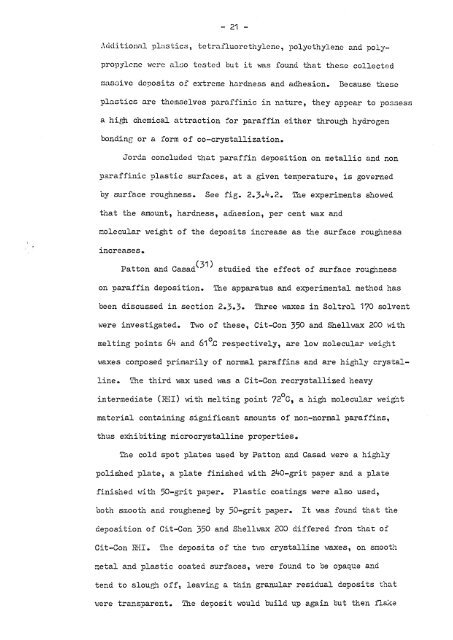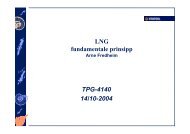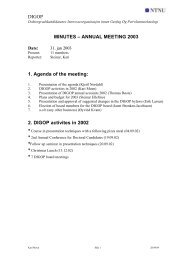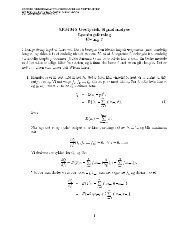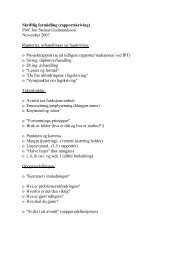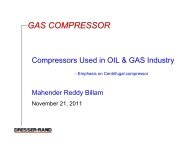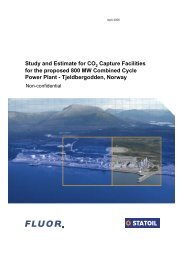paraffin wax deposition and fouling
paraffin wax deposition and fouling
paraffin wax deposition and fouling
Create successful ePaper yourself
Turn your PDF publications into a flip-book with our unique Google optimized e-Paper software.
— 2<br />
- S * .. -, ‘.: ,- - .-,-<br />
—<br />
hiditional plssticc, tetrafiuoretiiylenc, polyethylene ans noiy—<br />
propylene were also tested hut it was<br />
found that these co:Jccteci<br />
massive denosjts of extreme hardness <strong>and</strong> adhesion.<br />
3ecause these<br />
plastics are themselves oaraffinic in nature, they aPpear to possess<br />
a high chemical attraction for <strong>paraffin</strong> either through hydrogen<br />
bonding or a form of co—crystallization.<br />
Jorda concluded that <strong>paraffin</strong> <strong>deposition</strong> on metallic <strong>and</strong> non<br />
<strong>paraffin</strong>ic plastic surfaces, at a given temrerature, is governed<br />
oy surface rounaness. ee tag. 25.42. The experaments showes<br />
that the amount, hardness, adhesion, per cent <strong>wax</strong> <strong>and</strong><br />
molecular weight of the deposits increase as the surface roughness<br />
increases.<br />
Patton <strong>and</strong> Casad<br />
studied the effect 0f surface roughness<br />
on <strong>paraffin</strong> aeposition. Wne apparatus <strong>and</strong> exerimental rnethon has<br />
been discussec. in section 2.5. nree <strong>wax</strong>es in So1tro<br />
70 so_vent<br />
were investigated. Two of these, Cit—Con 550 <strong>and</strong> Sheli<strong>wax</strong> 200 with<br />
me__ng pons o ann o • .C<br />
— - — --— -<br />
resrec1Vey, 2C OW oec_: wea<br />
<strong>wax</strong>es composed primarily of normal <strong>paraffin</strong>s <strong>and</strong> are higaly crystal<br />
line. The third <strong>wax</strong> used was a Cit—Don recrystallized heavy<br />
insermedsate (hTI) wata melting poant 72°C, a nign moLecular weagat<br />
materaa contasnang sagnafcant amounts of non—norma para::ans,<br />
thus exhibiting microcrystaline properties.<br />
One<br />
cold spot plates used by Patton <strong>and</strong> Casad were a highly<br />
polished plate, a plate finished with 2D—gri; paper <strong>and</strong> a ma;e<br />
finished with 50—grit rarer.<br />
Plastic coatings were also used,<br />
both smooth ann roughened. by 53—grit paper<br />
It was found that the<br />
<strong>deposition</strong> of Cit—Con 550 <strong>and</strong> SheJ<strong>wax</strong> 203 differed from that cf<br />
Cit—Don -:_.<br />
.ae<br />
neuosats of tae two crys;a_lane <strong>wax</strong>es, or, s::.oo:n<br />
reta <strong>and</strong> las;c coatea surfaces, were :ouno. so se ocacue ann<br />
tend so slough off, leaving a snan granular resanua nercsass<br />
. . _. c..<br />
o._a c<br />
—.- _S_


